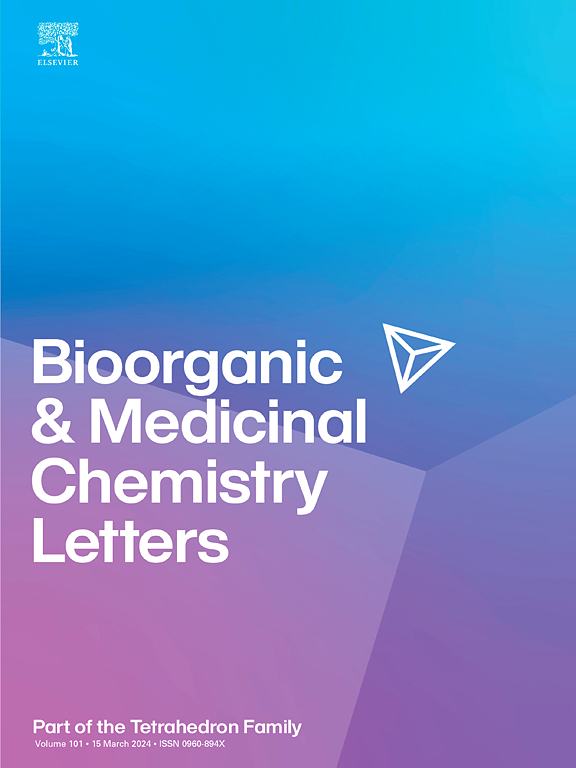4 ' - o -甲氧基乙基-2 ' -脱氧尿苷和胞苷核糖核苷酸改善双链稳定性,核酸酶抗性,并引发有效的Bcl-2表达下调
IF 2.2
4区 医学
Q3 CHEMISTRY, MEDICINAL
引用次数: 0
摘要
在这项研究中,我们报道了4 ' - o -甲氧基乙基脱氧尿嘧啶和4 ' - o -甲氧基乙基脱氧胞苷磷酰胺的合成及其与寡核苷酸的结合。3 ' -外切酶实验表明,4 ' -O-MOE dU单独掺入(T1/2 = 178 min)和与硫代磷酸酯修饰(T1/2 = 13 h)对dT10-mer的稳定性有显著提高。Western blot研究表明,当将4 ' -O-MOE-dU和4 ' -O-MOE-dC修饰置于抗bcl2 sirna的悬垂区和乘客链的多个位置时,它们具有良好的耐受性。此外,与天然siRNA相比,悬垂修饰的siRNA双链在IFNα水平上没有显着变化。分子模拟研究表明,4 ' -O-MOE基团与3 ' -核酸外切酶残基发生多重立体相互作用,有助于提高核酸酶抗性。此外,这种修饰可以很好地适应PAZ结构域,潜在地影响RNAi活性。总之,修饰后的脱氧核苷酸可以增强核酸药物的稳定性和疗效。本文章由计算机程序翻译,如有差异,请以英文原文为准。

4′-O-methoxyethyl-2′-deoxy-uridine and cytidine ribonucleotides improve duplex stability, nuclease resistance, and elicit efficient knockdown of Bcl-2 expression
In this study, we report the synthesis of 4′-O-methoxyethyl deoxyuridine and 4′-O-methoxyethyl deoxycytidine phosphoramidites and their incorporation into oligonucleotides. The 3′-exonuclease experiment indicated a significant increase in stability with the incorporation of 4′-O-MOE dU alone (T1/2 = 178 min) and in combination with phosphorothioate modification (T1/2 = 13 h) in dT10-mer. Western blot studies demonstrated that 4′-O-MOE-dU and 4′-O-MOE-dC modifications were well-tolerated when placed at both overhang regions and multiple positions within the passenger strand of anti-Bcl2 siRNAs. Moreover, overhang-modified siRNA duplexes showed no significant change in the IFNα level compared to native siRNA. Molecular modelling studies revealed that the 4′-O-MOE group makes multiple steric interactions with 3′-exonuclease residues, contributing to improved nuclease resistance. Additionally, this modification accommodates well within the PAZ domain, potentially influencing RNAi activity. Overall, the modified deoxynucleotides could enhance the stability and efficacy of nucleic acid drugs.
求助全文
通过发布文献求助,成功后即可免费获取论文全文。
去求助
来源期刊
CiteScore
5.70
自引率
3.70%
发文量
463
审稿时长
27 days
期刊介绍:
Bioorganic & Medicinal Chemistry Letters presents preliminary experimental or theoretical research results of outstanding significance and timeliness on all aspects of science at the interface of chemistry and biology and on major advances in drug design and development. The journal publishes articles in the form of communications reporting experimental or theoretical results of special interest, and strives to provide maximum dissemination to a large, international audience.

 求助内容:
求助内容: 应助结果提醒方式:
应助结果提醒方式:


